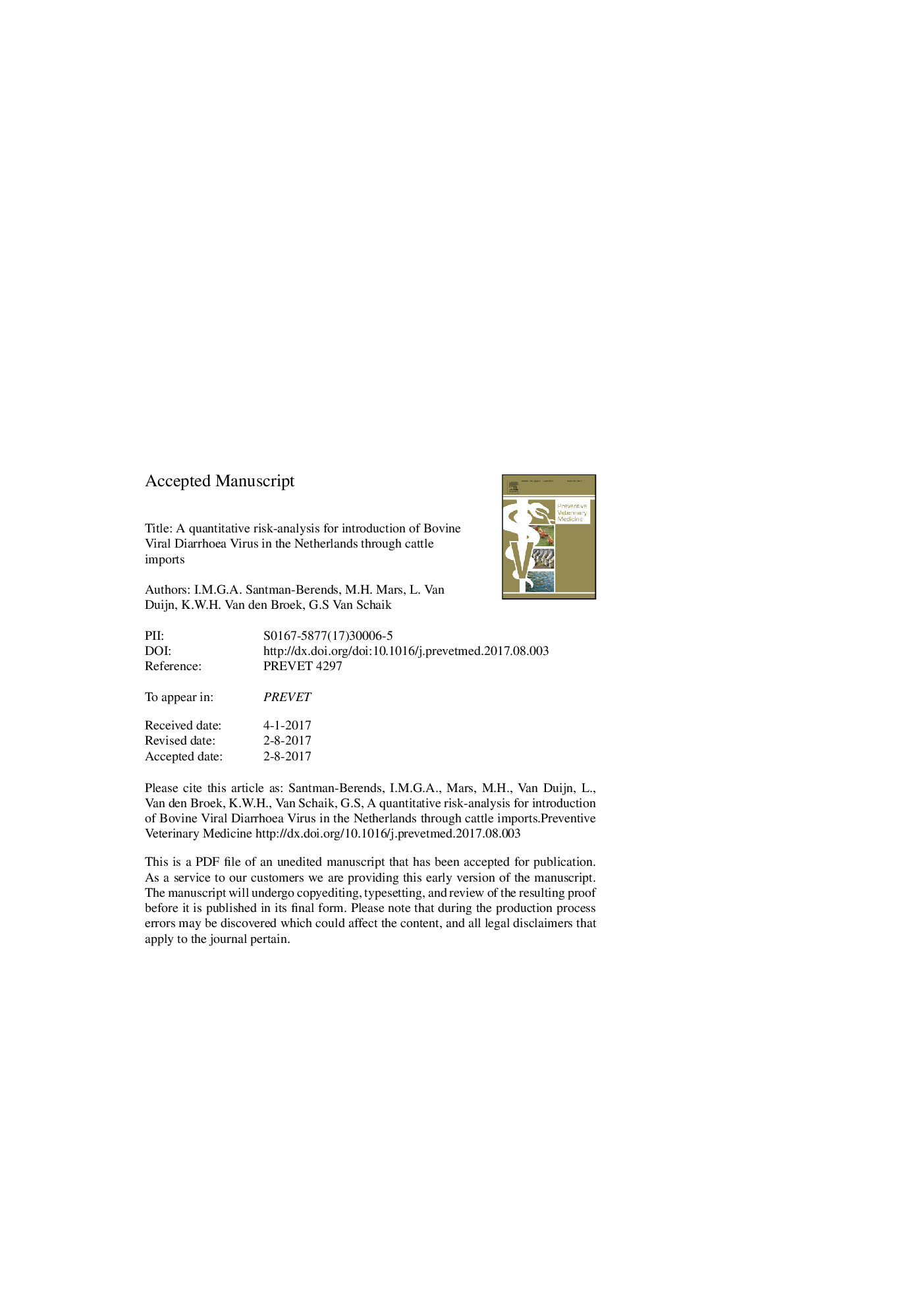| Article ID | Journal | Published Year | Pages | File Type |
|---|---|---|---|---|
| 5543493 | Preventive Veterinary Medicine | 2017 | 40 Pages |
Abstract
Each year, 334 (5th and 95th percentile: 65-902) Dutch cattle herds were estimated to be infected with BVDV through import. Veal herds account for most infections associated with import (87%), whereas in the other herd types, only 9 beef, 6 dairy, 2 small scale, 16 suckler, 10 trade and 2 young stock herds are infected through imports per year. Import of PI cattle is the most important risk for introduction in veal herds, while import of TR cows is the main source of BVDV introduction in dairy, small scale and suckler herds. With the intervention scenarios, the number of BVDV infected herds in the Netherlands could be reduced to 81 and 58 herds per year when respectively virus testing or a combination of virus and antibody testing was applied or to 108 herds when import from high risk countries was abolished. With the scenario in which both import from high risk countries was abolished combined with virus and antibody testing, the number of BVDV infected herds could be reduced to 17 herds per year. The risk assessment showed that BVDV is regularly imported in the Netherlands. The import risk can effectively be reduced by implementing diagnostic testing prior to import and only import cattle with a favourable result, eventually combined with certain trade restrictions.
Keywords
Related Topics
Life Sciences
Agricultural and Biological Sciences
Animal Science and Zoology
Authors
I.M.G.A. Santman-Berends, M.H. Mars, L. Van Duijn, K.W.H. Van den Broek, G. Van Schaik,
